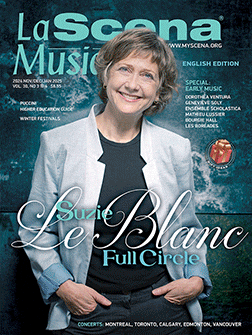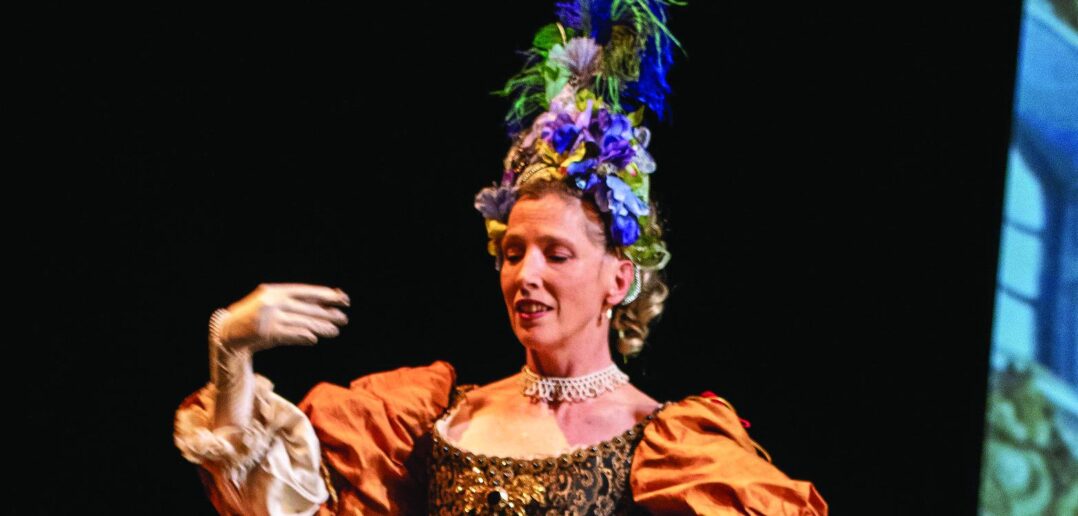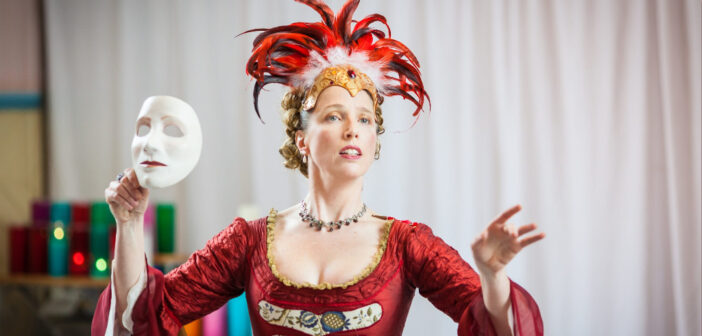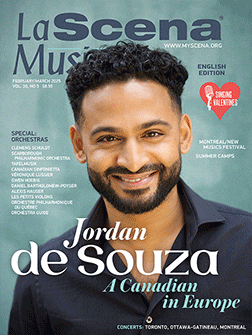
This page is also available in / Cette page est également disponible en:
![]() Francais (French)
Francais (French)
In 2008, director, choreographer and dancer Marie-Nathalie Lacoursière founded Les Jardins Chorégraphiques, a company specializing in early dance

Marie-Nathalie Lacoursière.
She first performed Molière’s plays in Old Quebec with, among others, violinist Olivier Brault. “When Olivier moved to Montreal to do his master’s in Baroque music at McGill, he suggested I teach Baroque dance to a group of students,” says Lacoursière. “Dancing helps instrumentalists to feel the music so that they can physically understand its characteristics.”
But how do you explain the success of these ancient dances in relation to contemporary dance? Baroque dance brings the music to life on stage—it’s a connection with the music that appeals to audiences. These dances are highly codified, and their rhythms are uniquely attuned to the music, with leaps and breaths.
Baroque dance flourished under Louis XIV, the Sun King. Traumatized as a child by the Fronde and its political turmoil, Louis XIV decided to govern away from intrigue. In 1661, he created the Royal Academy of Dance and forced courtiers to rehearse their choreography every day, so that they would no longer plot along the corridors. Then, to make Baroque dance universal, the Sun King instituted a system of choreographic notation that would precede classical dance.
“For our research, we have access to numerous court ballets, gigues and bourrées—360 annotated choreographies have been passed down to us, as well as a repertoire of steps and dance treatises, but opera choreography has disappeared,” says Lacoursière. With her contemporary sensibility—and taking into account the context, style, treatises of the period and what the character expresses—the choreographer reconstructs, interprets and reinvents many elements, just as musicians do.

Marie-Nathalie Lacoursière. Photo: Kevin Calixe.
The year 2024 is an auspicious one for Lacoursière, as she marks 30 years in the business. With Les Idées heureuses, the ensemble that got her started, she will present a new version of Musique et danse en Nouvelle-France, a show that paints an entertaining portrait of social life at the end of the French regime. The show is scheduled for Bourgie Hall on Jan. 16 at 7:30 p.m.
After presenting Handel opera arias with the Atelier d’opéra and the Ensemble baroque du Conservatoire de musique de Montréal (Nov. 14 & 15), Lacoursière returns to the Théâtre Rouge at the end of February with Mesdames de la Halle, a one-act comic opera by Jacques Offenbach. “These merchants were larger-than-life women,” she says, “and commedia dell’arte is well-suited to portraying them.”
www.conservatoire.gouv.qc.ca
This page is also available in / Cette page est également disponible en:
![]() Francais (French)
Francais (French)















